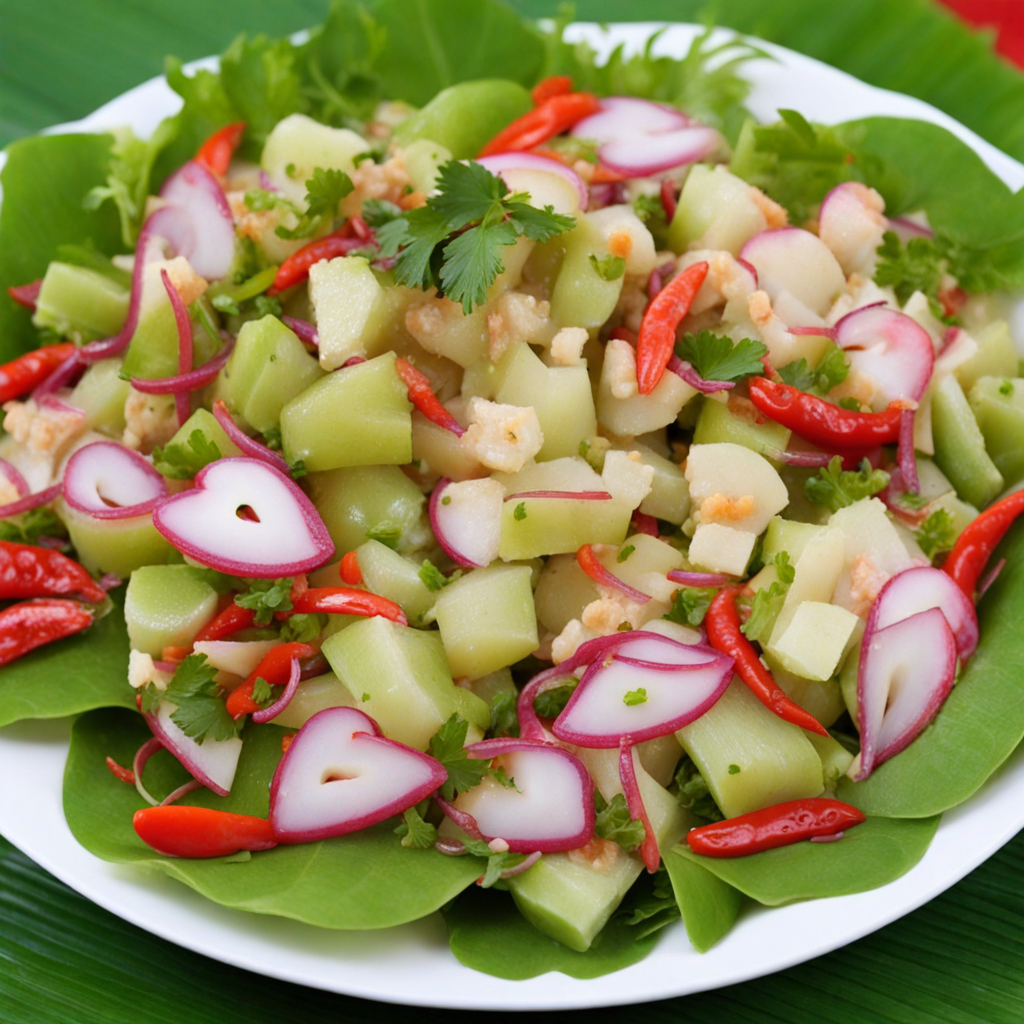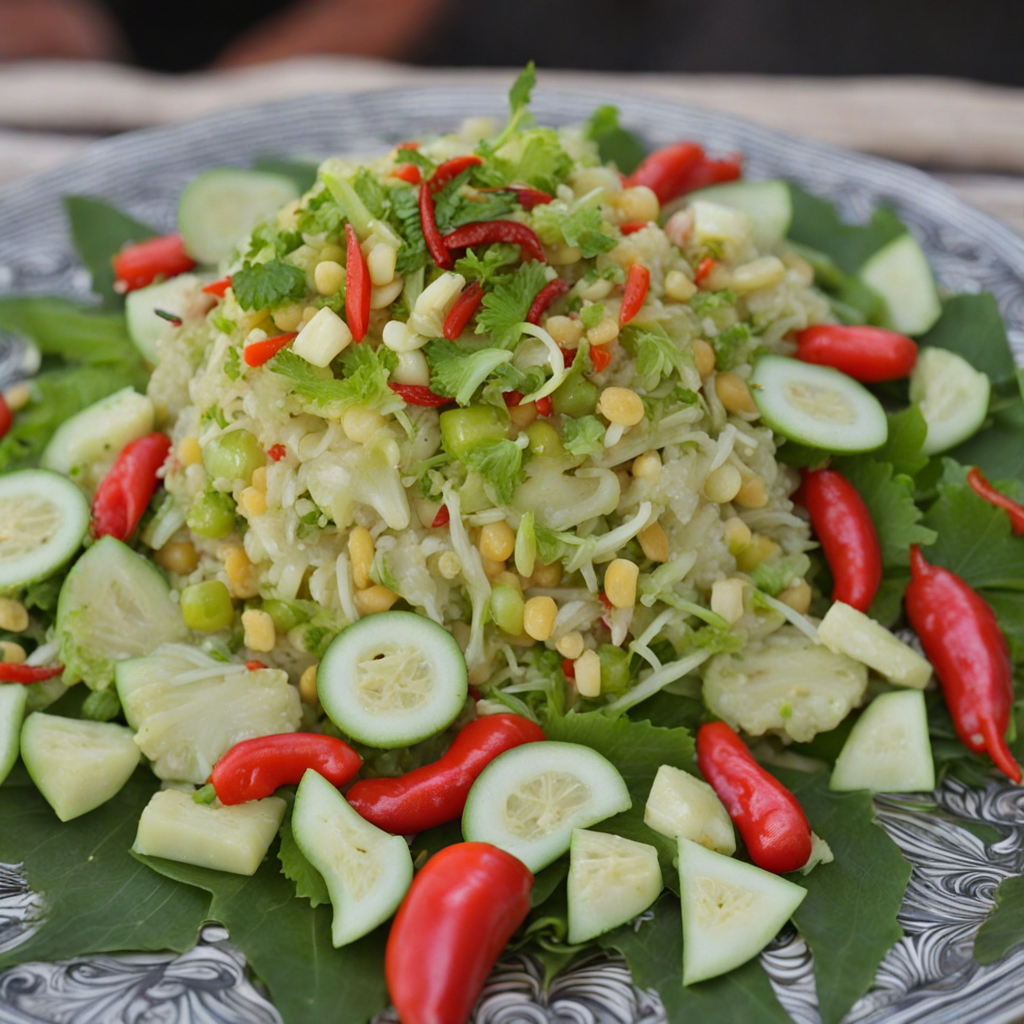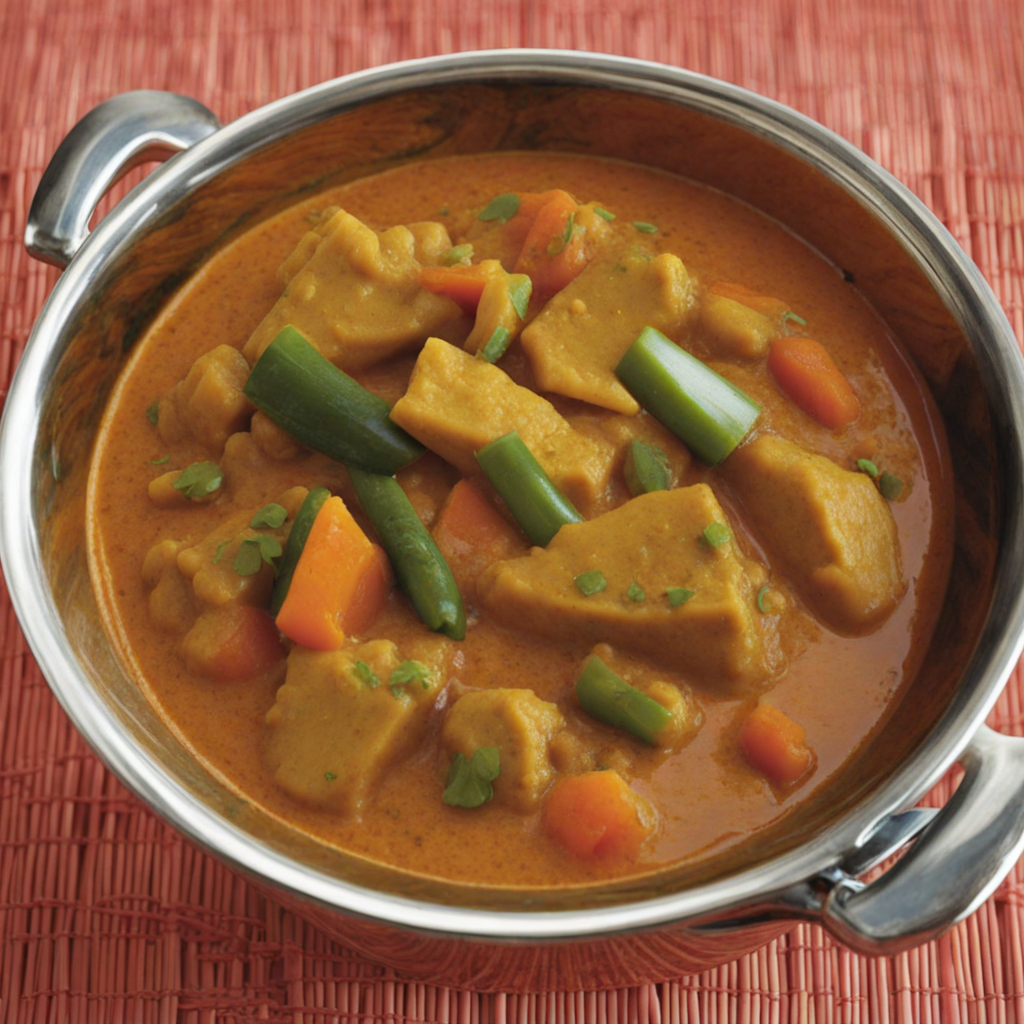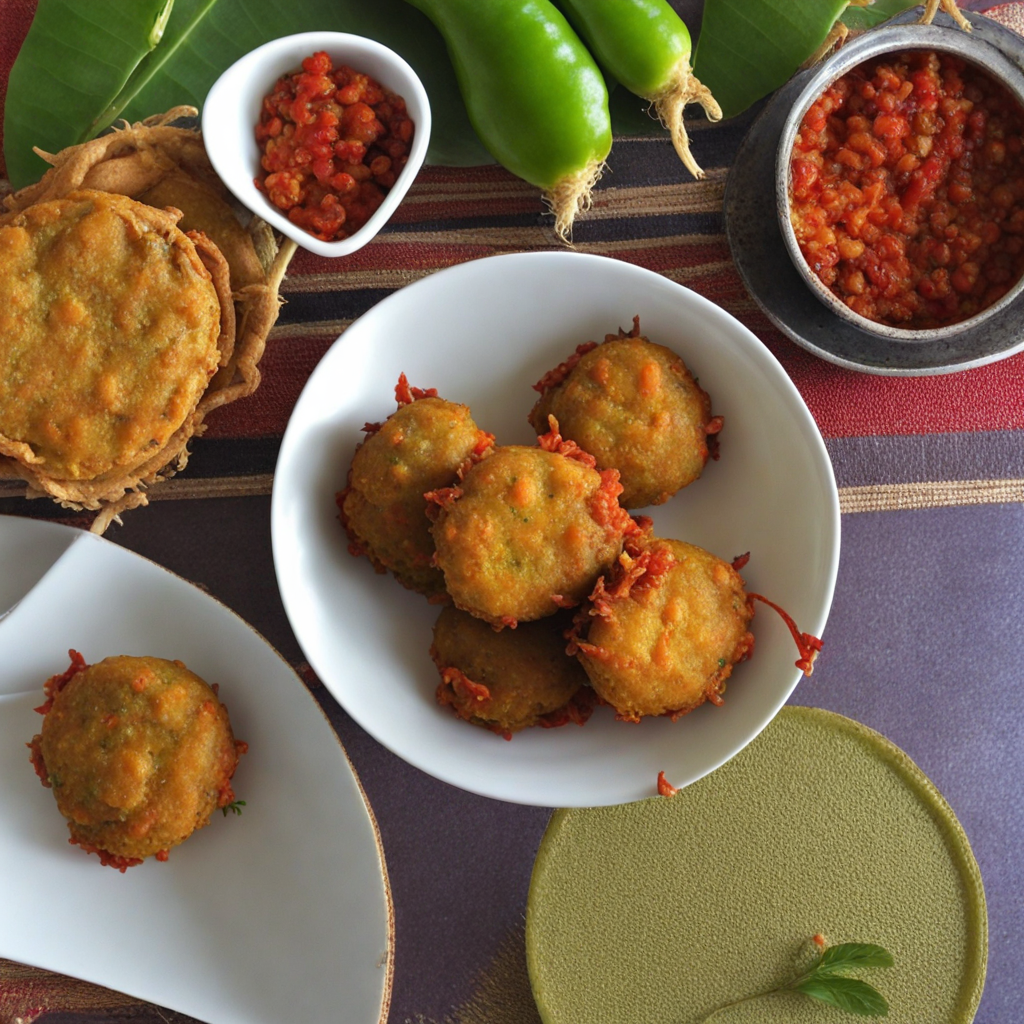Palm Heart Salad
Palm Heart Salad is a delightful dish that captures the essence of Mauritius through its vibrant flavors and textures. The central ingredient, palm hearts, is harvested from the inner core of certain palms, offering a tender and slightly nutty taste that pairs beautifully with a variety of other fresh ingredients. Typically, the salad is complemented by crisp vegetables such as cucumbers, bell peppers, and cherry tomatoes, which add a refreshing crunch and a burst of color, making the dish visually appealing as well as delicious. In addition to the fresh vegetables, a zesty dressing often enhances the salad, with ingredients like lime juice, olive oil, and a hint of mustard for tanginess. This dressing ties together the diverse components, elevating the overall flavor profile. Some variations may include herbs like cilantro or mint, which contribute a fragrant note, while others might incorporate diced avocados for creaminess. This fusion of tastes makes every bite of Palm Heart Salad a refreshing experience, reminiscent of the island's lush landscapes and tropical climate. What sets Palm Heart Salad apart is its versatility; it can be enjoyed as a light starter, a side dish, or even as a main course when paired with grilled seafood or chicken. The combination of the unique palm hearts and the fresh vegetables creates a culinary experience that is both satisfying and nourishing, making it a perfect dish for those looking to explore new flavors from Mauritius. Each serving is a celebration of the island's rich culinary heritage, offering a taste of the tropics that is both exotic and approachable.
How It Became This Dish
Salade Palmiste: A Culinary Gem from Mauritius #### Origins and Historical Context Salade Palmiste, a distinctive dish from the vibrant culinary landscape of Mauritius, has roots deeply embedded in the island's history. Mauritius, a small island nation in the Indian Ocean, is a melting pot of cultures, influenced by its diverse population that includes descendants of African slaves, Indian indentured laborers, Chinese traders, and French and British colonists. This rich tapestry of cultures has contributed to the island's unique culinary heritage, where Salade Palmiste stands out as a symbol of both local ingredients and community practices. The main ingredient of Salade Palmiste is the heart of the palm tree, commonly referred to as "palmiste" in French. The palmiste is harvested from the young trunk of specific palm species, primarily the Roystonea regia and the Veitchia merrillii. Historically, the extraction of the heart of palm was not just a culinary practice but also a reflection of the island's resourceful use of its natural environment. The indigenous population, along with early settlers, recognized the nutritional value of the palm heart, which has a tender texture and a subtle flavor, making it a versatile ingredient for various dishes. #### Cultural Significance Salade Palmiste is more than just a dish; it embodies the spirit of Mauritian culture and community. Traditionally, it is served as a side dish or appetizer, often accompanying main courses during family gatherings, festivals, and celebrations. The preparation of Salade Palmiste is typically a communal activity, where friends and family come together to peel, slice, and mix the ingredients, fostering a sense of unity and shared heritage. The dish is often associated with local festivities and is a staple at weddings and religious ceremonies. It represents hospitality and the sharing of food, which is a significant aspect of Mauritian culture. The vibrant flavors and textures reflect the island's biodiversity and the harmonious coexistence of its various cultural influences. #### Ingredients and Preparation The basic preparation of Salade Palmiste involves the heart of palm, which is usually boiled and then sliced into thin rounds. It is commonly combined with a variety of fresh ingredients, such as diced tomatoes, onions, bell peppers, and sometimes cucumber. The salad is typically dressed with a simple vinaigrette made from olive oil, vinegar, and a sprinkle of salt and pepper. Some variations include the addition of fresh herbs like coriander or mint, which add an aromatic touch to the dish. One of the unique aspects of Salade Palmiste is its adaptability. Many Mauritian families have their own cherished recipes, often passed down through generations. Some may add seafood, such as shrimp or crab, while others might incorporate more exotic ingredients like avocado or tropical fruits. This flexibility allows Salade Palmiste to evolve while still maintaining its core identity. #### Evolution Over Time As Mauritius has grown and modernized, so too has the preparation and presentation of Salade Palmiste. In the early days, when the dish was primarily prepared for family gatherings, it was often served simply and without embellishments. However, with the rise of culinary tourism and the increasing popularity of Mauritian cuisine on the global stage, chefs have begun to experiment with the dish, adding modern twists while honoring traditional methods. In the late 20th and early 21st centuries, the influence of international culinary trends led to a resurgence of interest in local ingredients and traditional dishes. Salade Palmiste has found its place in gourmet restaurants as well as in casual dining settings. Chefs have elevated the dish by presenting it in creative ways, often pairing it with other gourmet components, thus appealing to both local and international palates. Furthermore, the growth of eco-tourism and a renewed focus on sustainable practices have contributed to the popularity of Salade Palmiste. As more people become conscious of where their food comes from, the use of locally sourced ingredients like palm hearts has gained traction. This not only supports local farmers and communities but also highlights the importance of preserving traditional culinary practices. #### Social and Economic Impact The continued popularity of Salade Palmiste has also had a significant social and economic impact on Mauritius. The demand for palm hearts has encouraged sustainable harvesting practices, which help to protect palm species and their habitats. Local farmers and foragers have become integral to the supply chain, ensuring that the dish remains a staple of Mauritian cuisine while fostering economic opportunities within rural communities. Moreover, the promotion of Salade Palmiste as a symbol of Mauritian identity has led to a greater appreciation for the island's culinary heritage. Culinary festivals, cooking classes, and food tours centered around traditional dishes have proliferated, allowing visitors to experience the rich flavors of Mauritius firsthand. This not only enhances the tourism sector but also fosters cultural exchange, as visitors learn about the significance of the dish and its role in the community. #### Conclusion Salade Palmiste encapsulates the essence of Mauritian cuisine: a celebration of diverse flavors, rich history, and communal traditions. From its humble origins rooted in the island's natural bounty to its present-day status as a beloved dish both locally and internationally, Salade Palmiste is a testament to the resilience and adaptability of Mauritian culinary culture. As Mauritius continues to evolve, the enduring popularity of Salade Palmiste serves as a reminder of the importance of preserving culinary traditions while embracing innovation. It stands as a delicious symbol of the island’s heritage, inviting both locals and visitors to savor a taste of Mauritius, one vibrant salad at a time.
You may like
Discover local flavors from Mauritius







